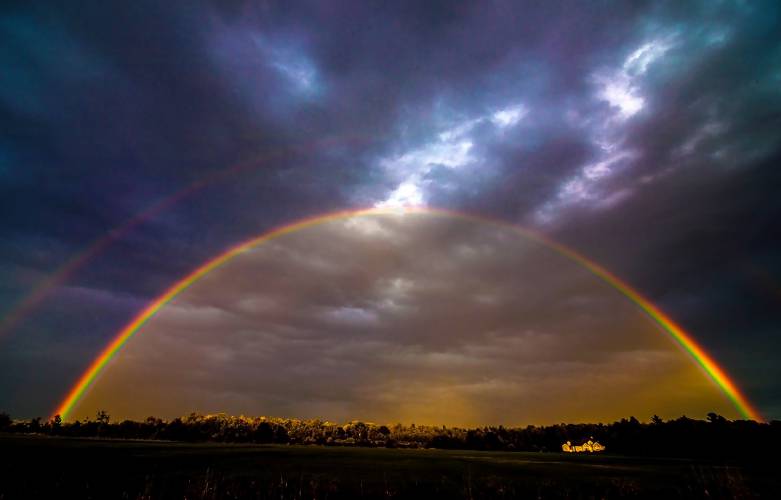Rainbows are really weird, when you stop and think about it. To a certain extent they don’t even exist – any given rainbow is a mass optical illusion rather than an actual thing.
But they are fascinating. Even the sky around them is fascinating: Lighter on the inside, darker on the outside, darker still between double rainbows.
Why? Optics. Meaning: It’s complicated. Here’s one discussion about it.
I mention this because Geoff Forester, The Concord Monitor’s long-time photo chief, took the above astonishing photo, which shows the lighter-below phenomena to the point that I thought it was filtered. He swears it wasn’t.


 Return to the Concord Monitor
Return to the Concord Monitor
Another thing that doesn’t even exist: blue sky. (As a physics teacher told me once upon a time: “Mumble mumble Rayleigh scattering mumble mumble.”)
But (generally speaking) we don’t see “things”; we sense the light bouncing off (or being emitted by) those things. Rainbows are no exception.
True, but we can gather evidence about “things” from other sources to confirm the bounced-light patterns – smell, taste, hearing, touch. You can’t do that with a rainbow.
With a rainbow, you’re seeing (essentially) water droplets. Which are real, and can be detected by other means. It’s simply the light bouncing off/through them just right. Not conceptually different from your desk chair.
I’m sorry, I’m just feeling overly pedantic today. It will pass. Don’t get me started on mirrors.